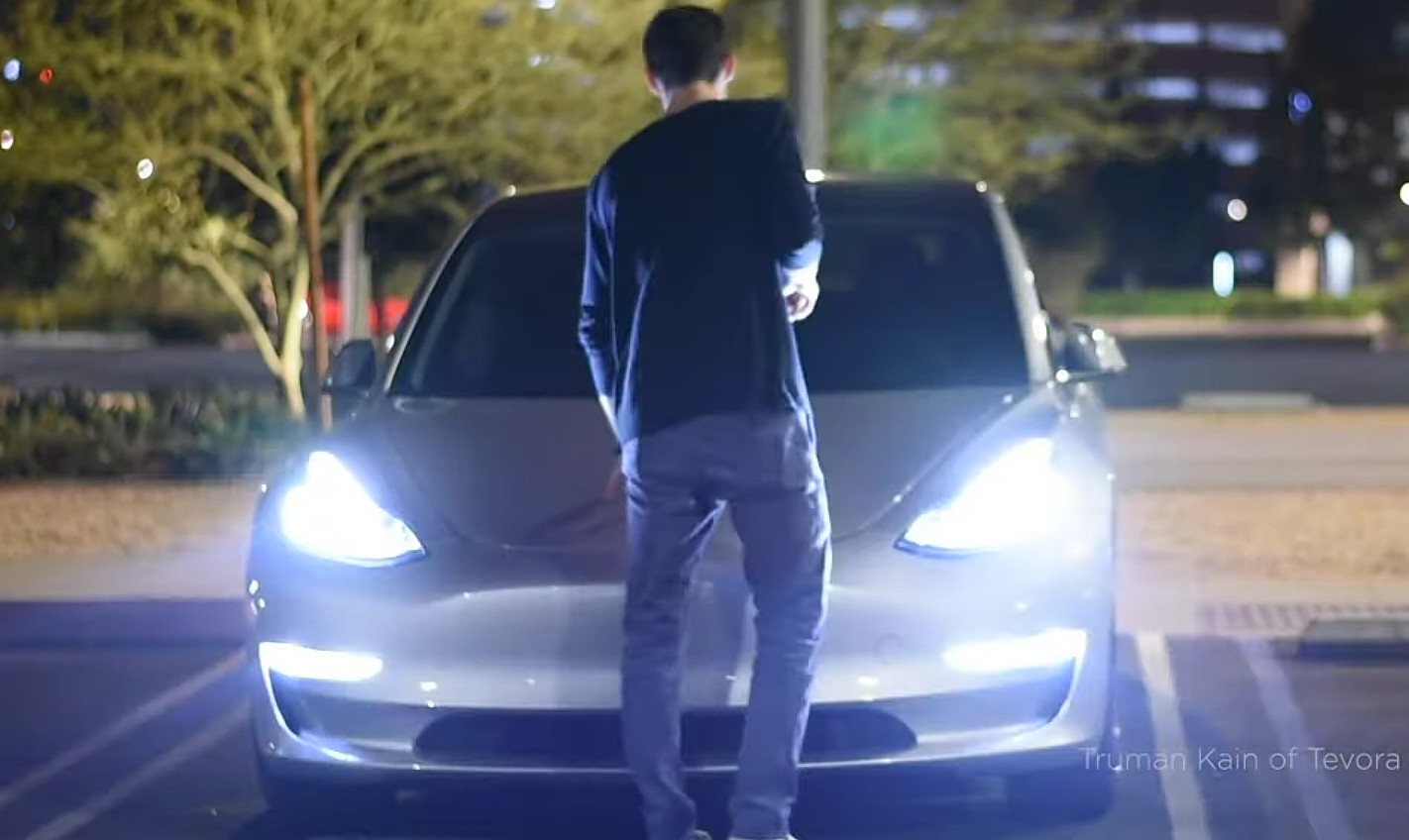
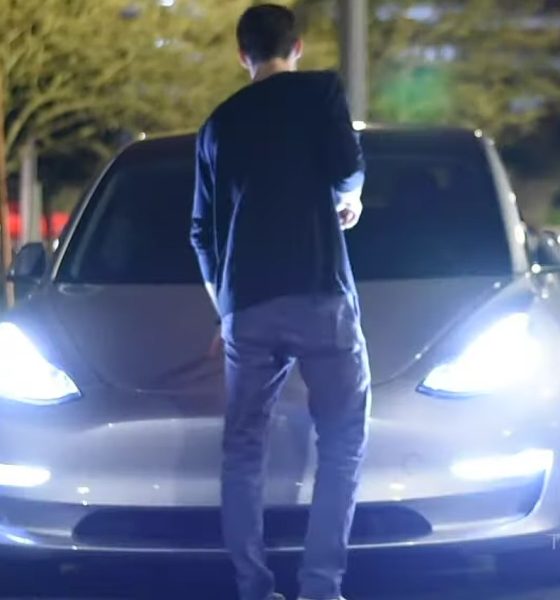
DIY
Tesla Model 3 owner creates a novel DIY solution for a supercharged Sentry Mode
To say that Tesla’s electric cars are among the auto industry’s most tech-focused vehicles is a gross understatement. Being computers on wheels, the electric car maker’s vehicles are capable of gaining new features over time. And just like with all things tech, these features, such as the security-focused Sentry Mode, are bound to get improvements after their release.
Introduced back in February, Sentry Mode taps into a Tesla’s suite of cameras to provide a set of watchful eyes around a vehicle while its owner is away. Videos captured by the feature have already been proven useful, with law enforcement using footage from Teslas to identify car thieves and vandals multiple times in the past.
With Tesla’s continuous pace of evolution, it will likely be only a matter of time before Sentry Mode receives an update that makes it more robust. One such potential upgrade was showcased during the recently-held Defcon hacker conference, with Model 3 owner and security researcher Truman Kain revealing one of his novel projects. Dubbed the Surveillance Detection Scout, Kain’s DIY computer essentially supercharges Sentry Mode and TeslaCam, turning a Tesla into a mobile surveillance unit.
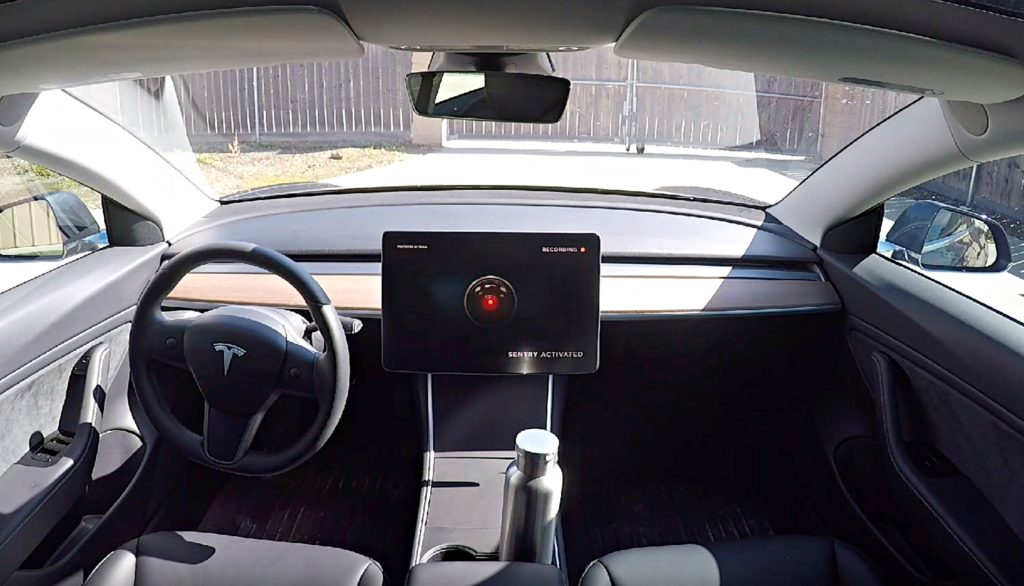
During his presentation, Kain noted that Scout allows Teslas to capture and analyze videos from their cameras using custom software and a $700 Nvidia Jetson Xavier mini-computer. The device utilizes Darknet as its machine learning engine, ALPR Unconstrained for recognizing license plates, and Facenet for tracking faces. The DIY device fits into the center console of a Model 3 or Model S, plugging into the vehicles’ dashboard USB port.
In a statement to WIRED, Kain highlighted that Scout uses software and hardware that is already available. “I’m not doing any cutting-edge AI. I’m just applying what’s already freely available, off the shelf,” he said.
The DIY solution allows Teslas to recognize and analyze license plate numbers and faces that are captured by its cameras, alerting owners if repeated plates and faces are detected. These alerts are then pushed through the IFTTT app. Kain notes that the system could have the potential to help Tesla owners, particularly those who have reason to believe that they are being followed or cased. “If it helps keeps someone safe, that’s great. If it lets me know that someone’s sneaking around my car, that’s also great,” he said.
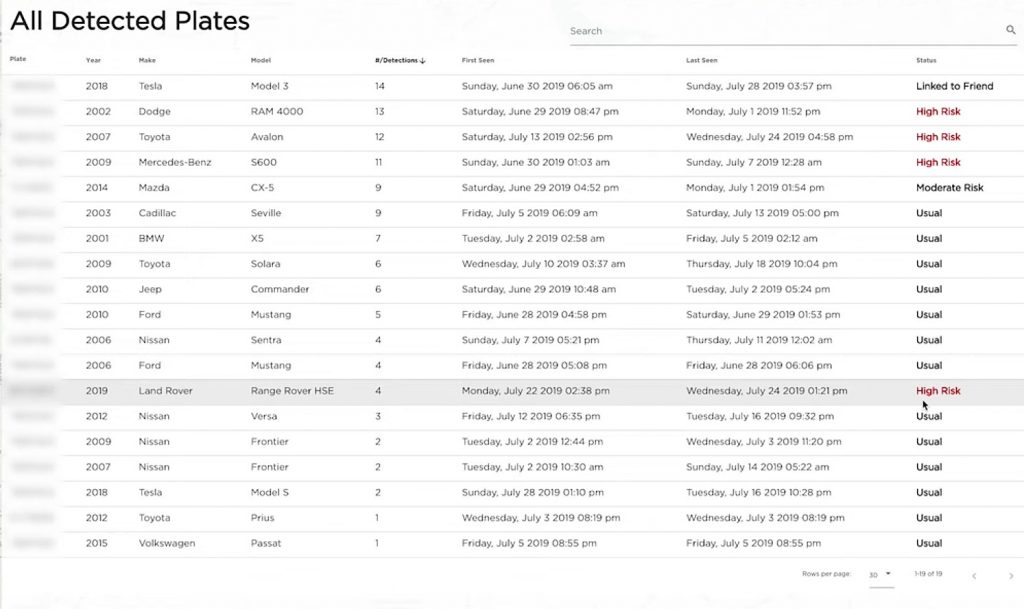
The potential privacy issues of such a project are notable. Scout essentially transforms a Tesla into a mobile surveillance unit, and this comes with potential ethical and legal issues. Automatic license plate reading capabilities will make Scout illegal in Arkansas, New Hampshire, Maine, and Georgia, for one, while its Google NEST-like facial recognition features will make it illegal in Illinois. And these are all before the idea of data sharing is discussed. That’s a completely different can of worms on its own.
In a message to Teslarati, Kain noted that the Surveillance Detection Scout is, ultimately, a means to raise awareness of what could be expected as more and more vehicles get Tesla-like security features. Tesla might be the only company that is constantly rolling out software updates like a Silicon Valley tech company, but with the advent of electrification, it will only be a matter of time before even veteran carmakers will jump into the internet-based active vehicle security bandwagon.
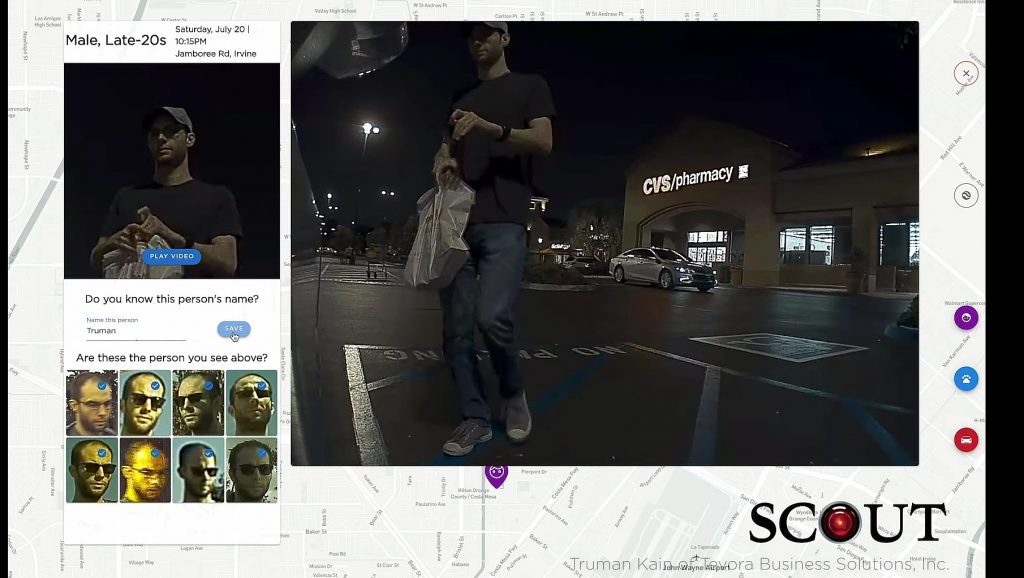
For Kain, among the worst-case scenarios would be a third party company creating a Scout-like device that would store customers’ data and sell them to market research firms. “There is a very real risk of some random guy like me or some small company having access to video and rich vehicle data for thousands or tens of thousands of Tesla’s if they package this up and market it as the ‘NEST cam for your Tesla’ – and like everything else these days, people would likely sign away the rights to the data in return for free service,” he mused.
While Tesla is not in the security business, Kain believes that it will only be a natural progression for the company to improve Sentry Mode to make it more robust. In a message, the security researcher mused that Tesla would likely introduce NEST-style capabilities, live viewing, and perhaps timeline reading, to its security features in the future. This is quite plausible, especially since Tesla already has access to its fleet’s data. The researcher noted that Tesla could, in the future, even monetize these upgraded security features as a paid service.
Overall, Kain states that he remains hopeful for Tesla and its future as a more prolific carmaker. “With all of that said, I love my car, support Tesla and Elon’s mission(s), and am simply trying to raise awareness around what may likely happen as more and more camera-equipped vehicles get on the road,” he wrote.
Watch a teaser for Scout’s capabilities in the video below.

DIY
Tesla Model 3 pickup “Truckla” gets updates and a perfectly wholesome robot charger
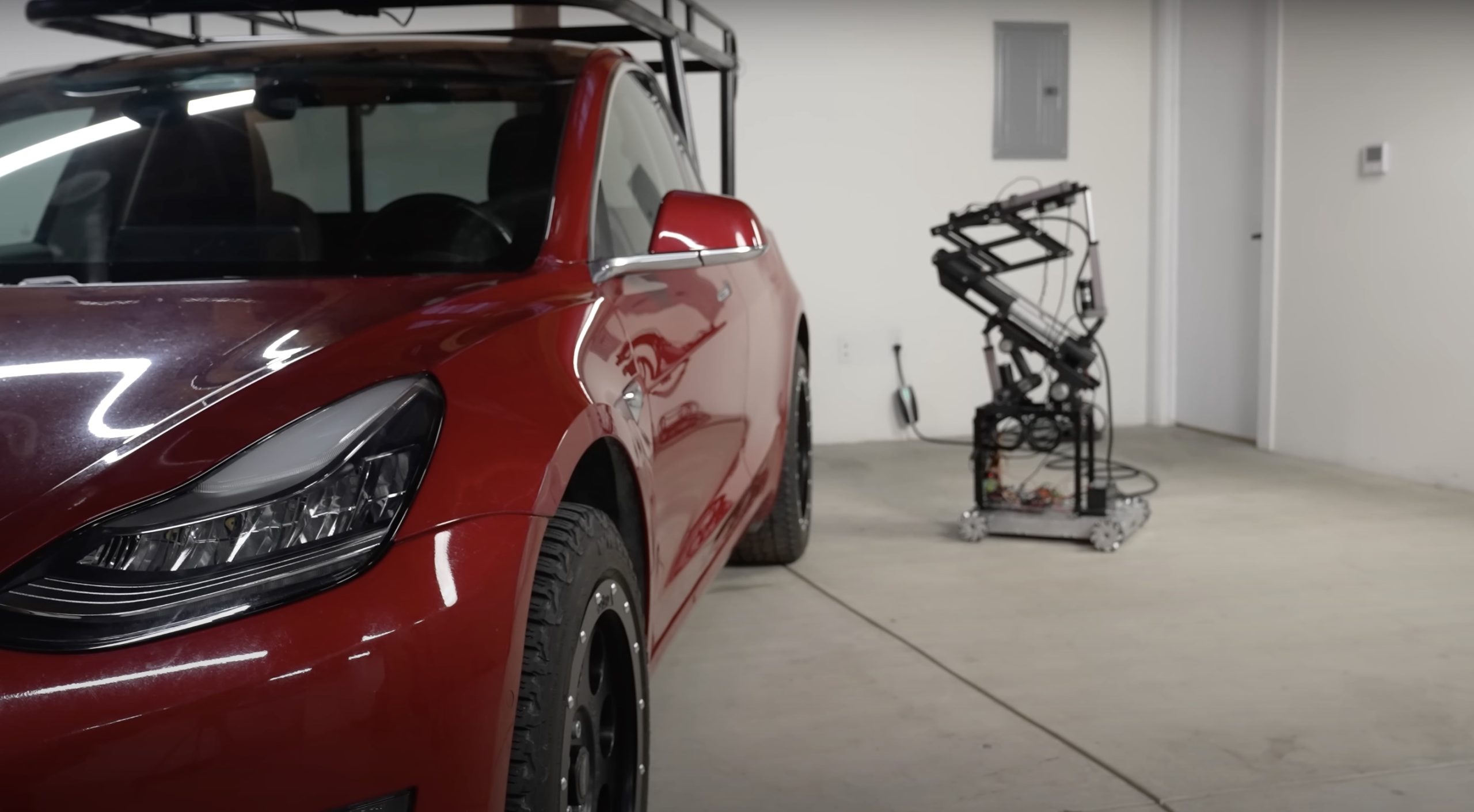
Back in 2019, YouTuber Simone Giertz, the self-proclaimed “Queen of Sh*tty Robots,” created a one-off Tesla Model 3 build that took the automotive world by storm. Fondly dubbed as “Truckla,” Giertz noted that the vehicle was actually her dream car — as crazy as that may sound.
Now almost four years later, the YouTuber posted an update on Truckla. And just like every other big project that one probably started, Giertz stated that she actually stopped working on Truckla when the vehicle was about 80% complete. The car is driving though, but a lot of stuff was not really working very well.
Thus, for her Truckla update, Giertz shared how most of her Model 3 pickup truck conversion was essentially completed. Truckla got a lot of detailing done, she got a slight lift, and she now has a functional tailgate. One has to admit, Truckla’s tailgate is pretty darn cool.
The “Queen of Sh*tty Robots” also opted to give Truckla a friend in the form of an automatic robot charger. Unlike Tesla’s rather interesting snake charger from years past, Truckla’s charger would come in the form of a rover, thanks to her friends at robotics platform Viam. Giertz aptly named Truckla’s robot charger friend “Chargela,” which is an appropriate name for such an invention.
Also true to form for Giertz, Chargela’s first encounter with Truckla was just a tiny bit awkward. One could say that Chargela may have just been a little bit nervous on his first try without human hands helping him. Most importantly, the system did work, so Giertz would likely keep using Chargela for her Model 3 pickup.
Teslas are very tech-heavy vehicles, so projects like Giertz’s Truckla are always remarkable. The fact that the Model 3 works perfectly fine despite having a good chunk of it cut off and turned into a pickup truck bed is mighty impressive any way one looks at it. Overall, Truckla will always be one of the coolest Tesla DIY projects to date, so any updates about the vehicle are always appreciated.
Truckla’s nearly four-year update can be viewed below.
Don’t hesitate to contact us with news tips. Just send a message to simon@teslarati.com to give us a heads up.
DIY
Tesla fan creating ‘CyberRoadster’ using Model 3 Performance parts in epic DIY build
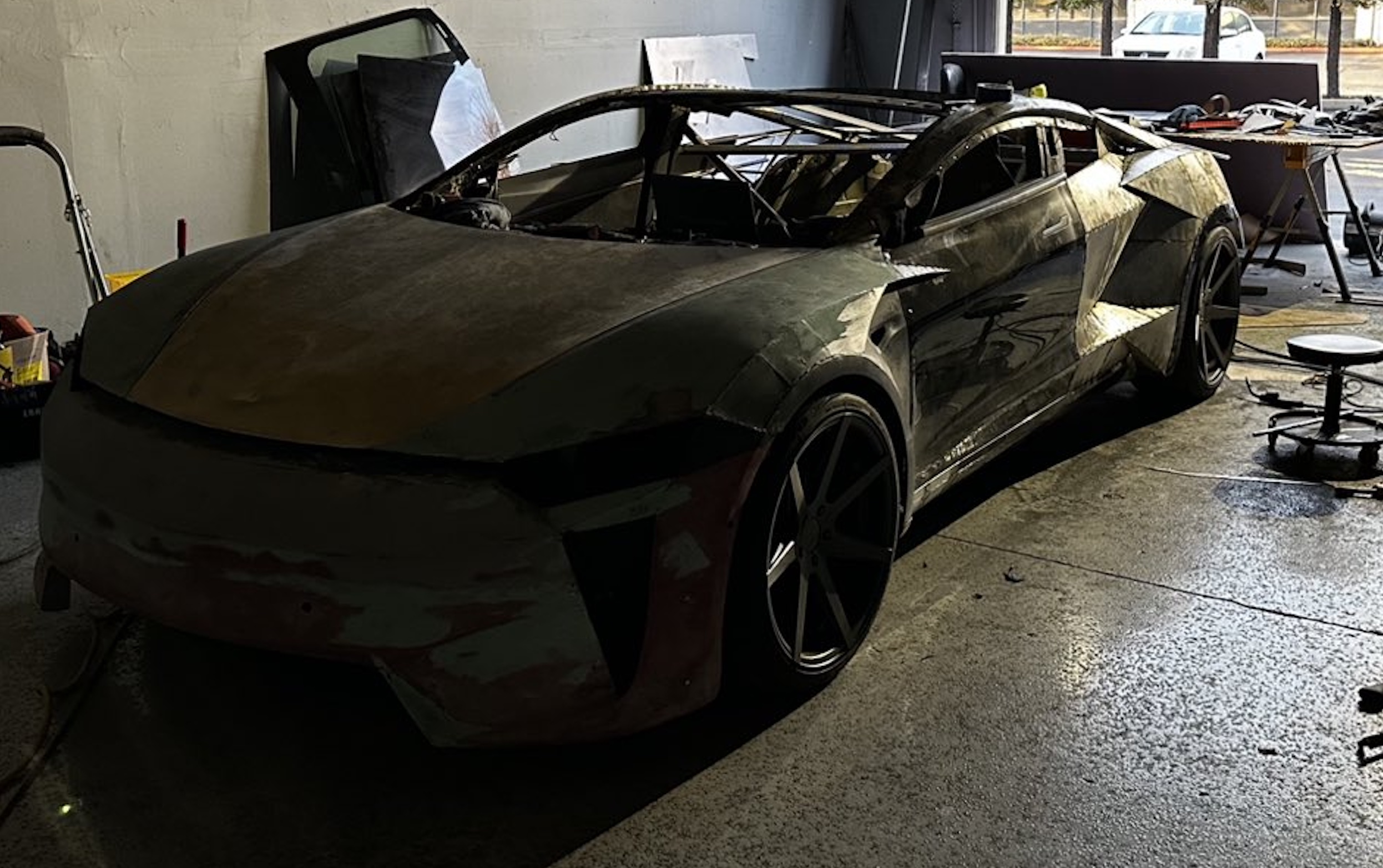
A Tesla owner is taking his hobby and love for electric vehicles to new levels by creating what could only be described as one of the coolest EV-related DIY projects to date. The idea for the project is simple: what happens when you cross a supercar with the Cybertruck? You end up with a two-seater CyberRoadster.
Tesla owner David Andreyev, who goes by the username @Cyber_Hooligan_ on Twitter, has spent the last few months creating a Cybertruck-inspired version of the next-generation Roadster made from a salvaged Model 3 Performance. Starting with a Model 3 Performance is an inspired choice, considering that it is Tesla’s first vehicle that has a dedicated Track Mode.
A look at Andreyev’s YouTube channel, which can be accessed here, shows the meticulous build that the Tesla owner has implemented on the project car. What’s particularly cool about the CyberRoadster is the fact that it’s being built with parts that are also from other Tesla vehicles, like its front bumper that came from a new Model S. Recent videos suggest that the project car’s rear bumper will be from a new Model S as well.
The journey is long for Andreyev, so the completion of the CyberRoadster will likely take some more time. Despite this, seeing the Tesla owner’s DIY journey on such an epic build is more than satisfying. And considering that the CyberRoadster is evidently a labor of love from the Tesla owner, the final results would likely be extremely worth it.
There’s a lot of crazy Tesla modifications that have been done as of late. But some, as it is with a lot of things on the internet these days, have become more silly gimmicks than serious automotive projects. Fortunately, car enthusiasts like Andreyev, who just happen to also love electric vehicles, are taking it upon themselves to create one-of-a-kind EVs that would surely capture the attention of anyone on the road.
Check out the latest video in the CyberRoadster’s creation below.
Don’t hesitate to contact us with news tips. Just send a message to simon@teslarati.com to give us a heads up.
DIY
Tesla owner ‘charges’ Model 3 with homemade solar panel trailer
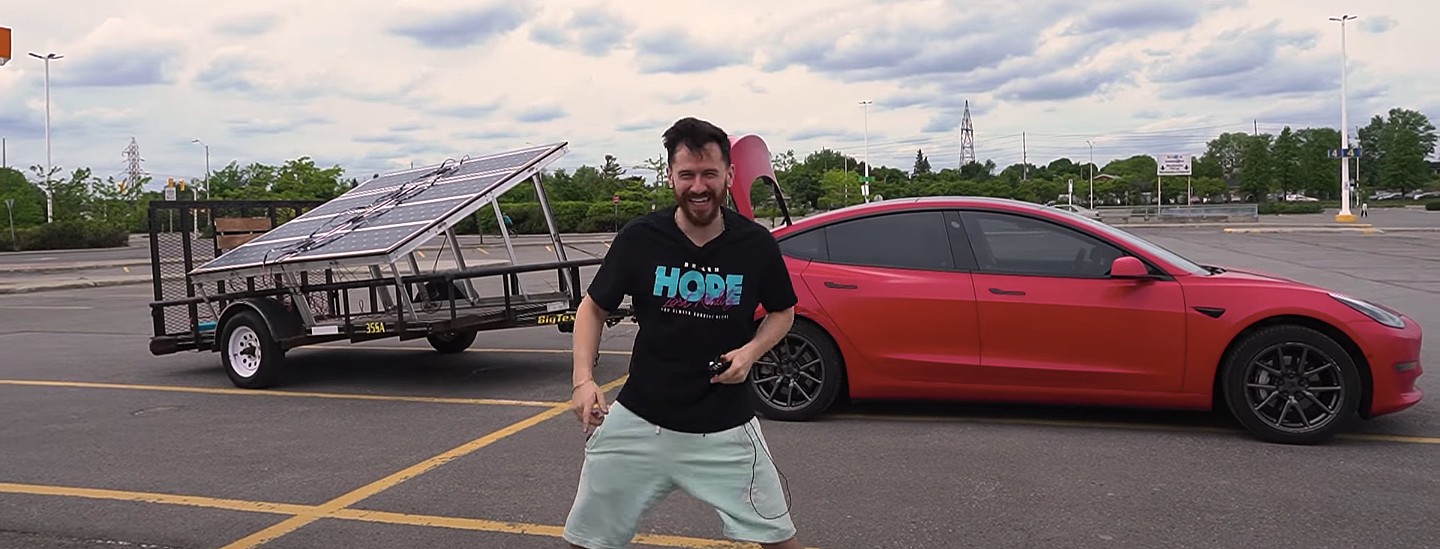
A Tesla owner has demonstrated a rather novel way to charge his Model 3. In a recent video, Sean Callaghan of the ItsYeBoi YouTube channel opted to use a series of off-the-shelf solar panel sheets onto a towable trailer to create a mobile charging unit for his all-electric sedan.
Callaghan planned to use only the sun and the solar sheets purchased from e-commerce platform Wish to charge his Model 3. The solar panel sheets would collect energy from the sun and transfer it to a control panel. The control panels were connected to batteries that would hold the energy—the batteries connected to an inverter, which would then charge the Tesla Model 3.
The entire assembly would provide the Model 3 with about 800 watts of energy on a completely sunny day. However, Callaghan shot the video when weather was overcast, so the entire solar panel trailer build only managed to provide around 300 watts throughout the YouTube host’s test.
To put this into perspective, a 100 volt home wall outlet provides 1.4 kilowatts of power, or 1,400 watts. Therefore, the 300-watt solar panel assembly built by Callaghan was producing less than 25% of the energy of a typical wall outlet. This is pretty marginal compared to Tesla’s 250-kilowatt V3 Superchargers, which provides 250,000 watts, or about 833 times as much power as the makeshift solar panel build.
However, Callaghan’s goal was not to charge the vehicle quickly. He explained the idea came from a previous video where he used a $5,000 Wish-purchased wind turbine to charge his Model 3. He wanted to test the effectiveness and efficiency of the system, which was questionable due to the time it would take to charge the battery fully.
The Model 3 battery pack is 78 kWh, and with Callaghan’s 300-watt system charging his electric vehicle, it would take 260 hours to supply the Tesla’s battery to full capacity.
In the past, electric vehicle enthusiasts have asked Tesla CEO Elon Musk why the company’s vehicles do not contain solar glass roofing, which would charge the car while the owner is driving. Musk has explained that the efficiency of this idea is challenging and likely would not provide an ample amount of range.
When asked about the idea of putting solar panels on the top of Tesla’s vehicles in 2017, Musk responded that the idea was “Not that helpful, because the actual surface of the car is not that much, and cars are often inside. The least efficient place to put solar is on the car.” It also would not be cost-effective for Tesla because “the cost of the panels and electronics, R&D and assembly would never pay for itself in the life of the vehicle, compared to charging from the wall in your garage,” Quartz noted.
That being said, Tesla plans to implement solar panels onto the motorized tonneau of the upcoming Cybertruck. The idea was discussed on Twitter when Musk stated that the optional feature would add “15 miles per day, possibly more” when parked in the sunlight. Also, fold-out solar wings could help capture enough solar energy for 30 to 40 miles a day.
Watch Sean Callaghan’s video of his makeshift solar panel trailer below.








